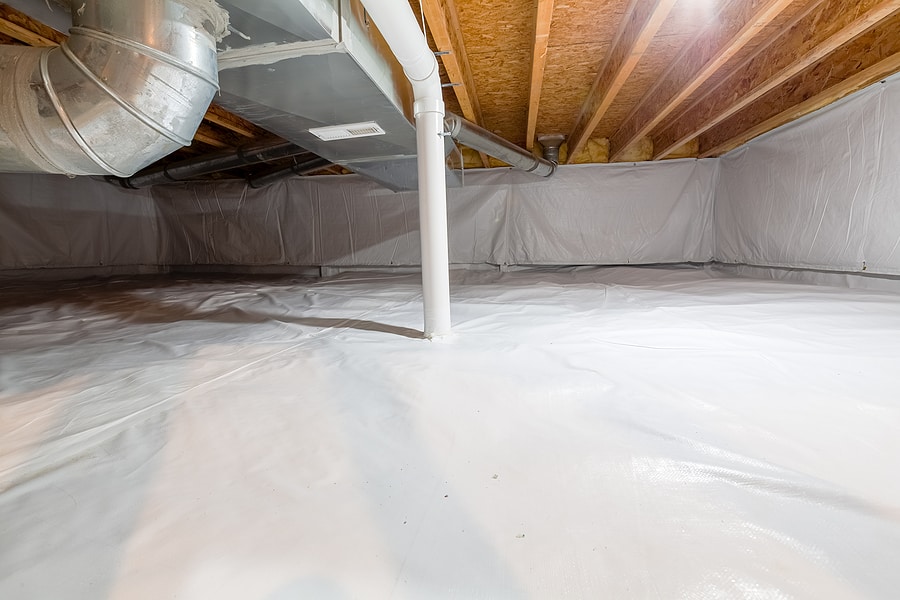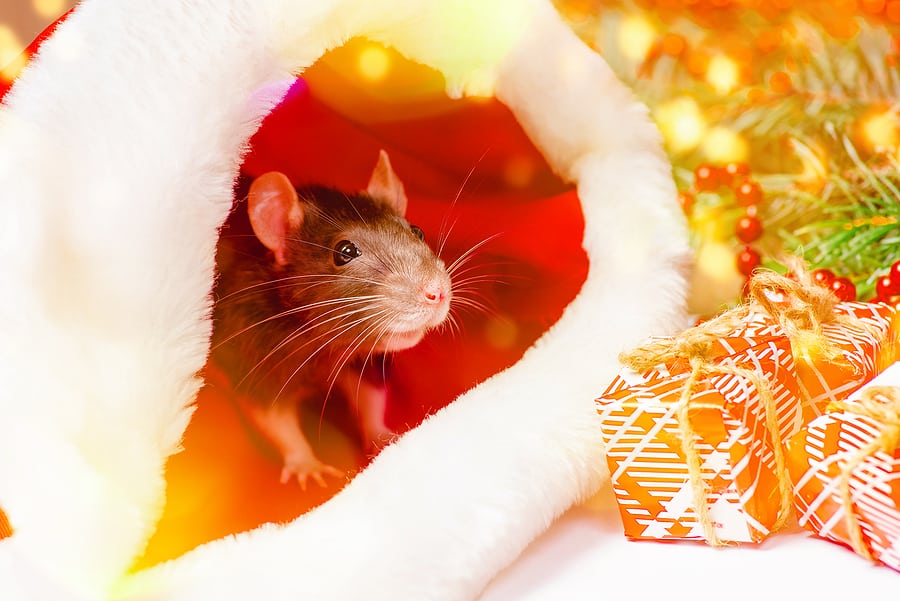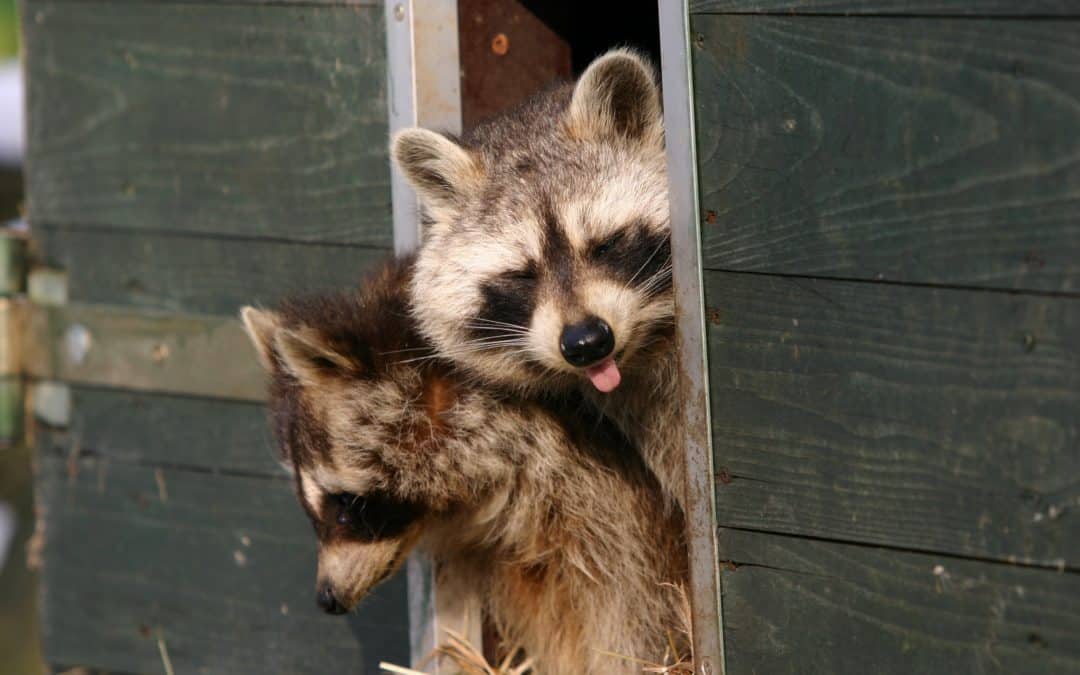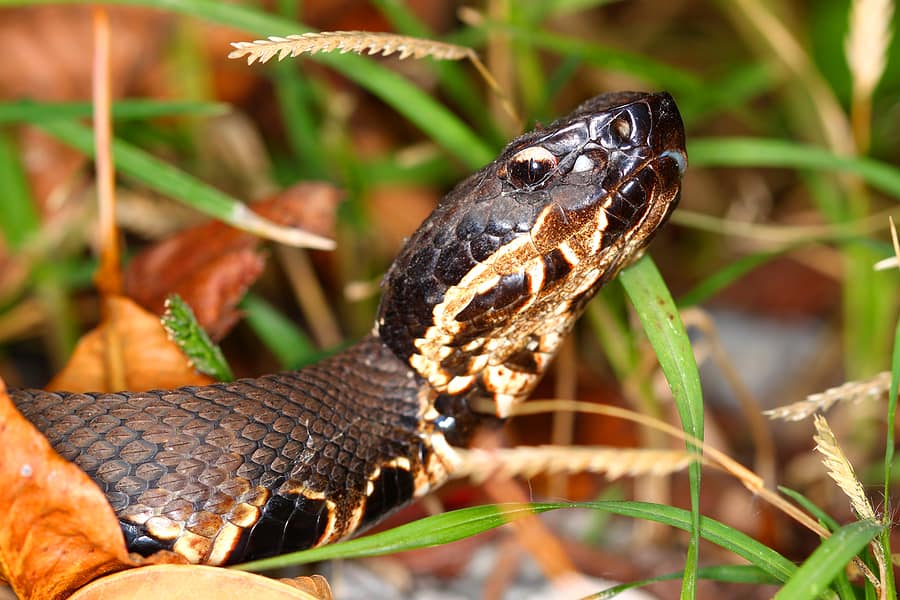READY TO GET STARTED?
REQUEST A FREE ESTIMATE
Fill out the form below or call (888) 466-7849 for a free, no-obligation estimate.

A moisture barrier is a plastic liner that covers the dirt in your crawlspace. These barriers are used to block vapors and moisture in the soil from entering your crawlspace. But is it necessary to install a moisture barrier under your home? While that decision remains a personal one for you as a homeowner, there are several benefits to moisture barriers.
Moisture in your crawlspace can affect the temperature inside your home. As your HVAC unit or furnace runs longer to help maintain the temperature inside, it uses more electricity which, in turn, increases your electricity bill. This also puts additional strain on the HVAC unit, causing them to wear out faster and need costly repairs and/or replacement. A moisture barrier acts as a sealant, controlling the moisture levels and easing the strain of your HVAC system, making your home more energy efficient and saving you money on your energy bills.
High moisture levels in your crawlspace provide the ideal environment for mold and mildew growth. Mold and mildew in your air system can be detrimental to your and your family’s health. Mold can also cause significant damage to your home. Installing a moisture barrier greatly reduces these moisture levels, preventing mold and mildew from forming. Mold and mildew are often the cause of foul odors in your home, as well. A moisture barrier can also help eliminate these stale, musty odors from your home.
Moisture that gets into your crawlspace affects the temperature in your home. It can make your home too hot, too cold, too stuffy, or too dry depending on the weather, the season, and other factors. The moisture either absorbs the warmth from your house or keeps it from escaping. In turn, this causes your HVAC unit or furnace to run too long trying to maintain a steady temperature indoors. Installing a moisture barrier seals those spaces and keeps the moisture out of your crawlspace, helping to regulate the temperature inside.
Your home’s foundation is vital to its structure and soundness. Moisture in your crawlspace can lead to wood rot, especially on joists and beams. Rotting wood can lead to significant structural damage to your home which can, in turn, stick you with a huge repair bill. Moisture barrier installation reduces the amount of moisture in your crawlspace which helps prevent wood rot, protecting the structural integrity of your home.
Your unsealed crawlspace is an open invitation to pests and wildlife in search of shelter, food, and water. Once inside, these critters can cause significant damage to your home and your health. Rodents and other wildlife can chew through wood and electrical wires. Roaches and other insects can use the crawlspace to gain access to your home, posing potential health risks to you and your family. Installing a moisture barrier completely closes off your crawlspace, eliminating this entry point for pests into your home.
How do you know if you have a problem within your crawlspace? Some signs of crawlspace trouble include:
If you are interested in moisture barriers or crawlspace enclosure, contact a reputable company for more information.

The holiday season is a time to enjoy family, eat delicious food, and not worry about pests! Unfortunately, overwintering pests such as spiders, rodents, ants, ticks, and more are looking indoors for food, water, and shelter. During the holiday season, Christmas trees, wreaths, firewood, decorations, and storage boxes provide the ideal opportunity for these pests to hitchhike inside.
Check out our top 3 pest prevention tips for holiday pest control.
Check Your Decorations
Attics, basements, and garages provide perfect storage spaces for our holiday decorations. These areas in your home are dark and secluded, making them the perfect place for pests to invade. Stored decorations provide an undisturbed hiding place for pests such as mice, rats, spiders, and more. These creatures will often crawl into the storage boxes you put away last season, contaminating and destroying your decorations.
To ensure that you do not bring these pests into your main living space, inspect and unpack these items outside first. After the holiday season has ended, pack your decorations like foliage, potpourri, and Indian corn in air-tight containers to help prevent pests for next year.
Check Your Firewood
With colder weather here, many homeowners start utilizing their fireplace, bringing in more firewood from outside. However, it’s crucial to inspect firewood before bringing it inside the home. Pests like spiders, termites, and ants are often found on firewood. Consider placing the firewood outside 20 feet from your home and on a raised platform.
Check Your Christmas Tree & Wreaths
If your family celebrates Christmas, you might opt to buy a real Christmas tree and wreath. While both can showcase the authentic look of Christmas, they also tend to carry pests such as spiders, moths, mites, and even squirrels!
To prevent these unwanted pests from hitchhiking indoors, inspect both items outside and then shake them. Also, check these items for any droppings, gnaw marks, or other damage before bringing them inside.
If you suspect that you have a holiday pest problem, consider reaching out to your local pest control company. These professionals will be able to inspect your home, provide the best pest control plan, and recommend prevention techniques for your home.

Food, water, and a warm place to live are three things wildlife creatures are in search of this winter season. For them, our house can give them direct access to these needs, where they often find their way into our chimneys, attic, basements, and crawlspaces. It’s important to know what pests to look out for and what preventative measures to take, to help prevent a wildlife infestation.
Rats
Seeing a rat inside is always alarming. These rodents are known to live in crawlspaces and between the side beams of walls, often accessing inside through the smallest hole and gap. Once inside, rats will chew on electrical wire, causing property damage and an increased risk of fires. Their droppings are also a risk, as they contain pathogens dangerous to humans.
Raccoons
Nocturnal omnivores, raccoons are dexterous and can use their paws to open lids and doors. These animals will use their hands to dig for food, especially in garbage cans. A creature of habit, once raccoons discover food sources in a particular area, such as your house, they will keep coming back over and over, causing both a risk of an infestation and damaged property.
Squirrels
Squirrels are one of the most common wildlife creatures homeowners see. While they are cute from afar, if found inside your home, they can cause considerable damage. Squirrels will take refuge in basements and attics, often bringing acorns to store for the wintertime. Like rats, these rodents will also chew on electrical wire, creating a risk of a fire. Both squirrels themselves and their droppings can contain diseases and pathogens.
To avoid a winter wildlife invasion, prevention is key. Here are a few wildlife prevention tips to help with wildlife control:

As the weather cools off and fall peeks around the corner, many people are taking advantage of the milder weather and spending more time outside. Unfortunately, many pests and wildlife, including snakes, are also enjoying the milder weather, preparing for the impending winter. Although most snakes encountered in Georgia are nonvenomous, there are a few species of venomous snakes to keep an eye out for. These include the copperhead, the timber rattlesnake, the cottonmouth, the eastern diamondback rattlesnake, the eastern coral snake, and the pigmy rattlesnake.
When spending time outdoors, keep an eye out for snakes in backyards, parks, and areas near the woods. They also like to frequent areas that border streams, lakes, swamps, and ponds. Snake season begins in the spring, usually March to April. Snake season doesn’t end until late fall or even winter, depending on weather patterns and where you’re located. Snakes in the southern states will stay active much longer than up north where the cold sets in sooner.
If you run into a snake, keep these tips in mind:
Because snake season hasn’t quite ended yet, it’s still important to take precautions when spending time outdoors. It’s best to leave snake removal to the professionals, especially if you aren’t sure what type of snake you’re dealing with. If you have a problem with snakes or any other pests, contact your local pest control company for proper identification and safe elimination of the offending creature.
Two Reasons You’re Attracting Termites
5 Common Ways to Attract Cockroaches
Preventing a Mosquito Infestation

Summer can bring out a mass of pests looking for food, water, and shelter. If certain preventative measures are not put in place around your home, they can easily infest inside, making them difficult to get rid of. Here we break down the top three most popular summer pests to look out for and how you can prevent them.
Ants
Ants are small, sneaky, and looking for your leftover food crumbs! These pests can access your home through only a small gap or hole leading inside. Inspect and seal all cracks and crevices throughout the inside and outside of your home. Likewise, eliminating potential food sources they find attractive is a great way to prevent ants. Make sure that you are keeping a clean home by sweeping, mopping, taking the trash out regularly, and immediately cleaning up any spills.
Mosquitoes
Mosquitoes are most active during warmer, humid weather. It’s certain you will come across these pests in the summertime but preventing them from infesting is easier than you think. Mosquitoes will lay their eggs in any standing water. Avoid standing water throughout your property by getting rid of objects that can hold water such as toys, pet bowls, tarps, birdbaths, etc. If clogged, gutters will also hold water, so make sure they are clear of debris to avoid providing them a place to breed and lay their eggs.
Roaches
Roaches eat just about anything, making them difficult to get rid of once they’ve infested your home. These pests can be a health threat as they are known to spread bacteria and cause severe allergic reactions. Eliminating any food source available to them is key to discouraging these pests. After each meal, wipe down any grease from the stovetop and appliances, clean up any leftover crumbs and spills from the countertops, and seal leftover food in airtight containers. Always take the trash out regularly and use garbage cans with tight-fitting lids. Before bringing in any newspapers or packages, inspect them throughout to ensure these pests are not sneaking in.
Dealing with summer pests can be a hassle and take away from all the summer fun! If you are having a summer pest problem, consider calling your local pest control provider. These professionals can provide you with a thorough inspection, identify the type of pest you are dealing with, and provide a treatment and prevention plan fit for your property.